Sonntag, 6. Mai 2018
Workshop: Scented candle
beekids, 17:17h
At the school we hosted a workshop: Scented Candle. Social company Bolje is represented sunflower oil-trademark candle Oilright.
Mr. Bogdan has presented problems arising from the use of palm oil and paraffin wax candles. For the production of palm oil, huge tropical forests are cut out, and paraffin wax is made of oil. When burning paraffin candles, toxic toluene and benzene are generated. Therefore, use the paraffin candle as little as possible in enclosed spaces. We learned that wax candles are healthier for people, but they are more expensive.
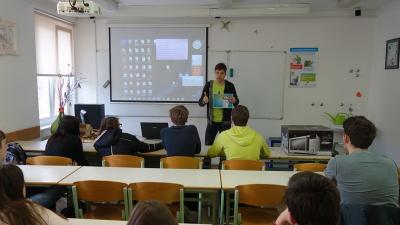
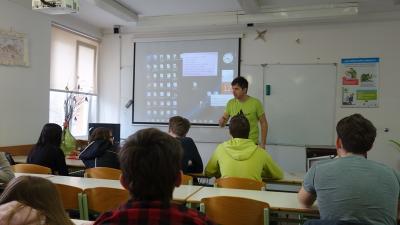
Mr. Bogdan also showed us, how we can make a candle. For a simple candle, we need a glassware, water, waste cooking oil and wicks. So the candle is ready and just waiting to light it.
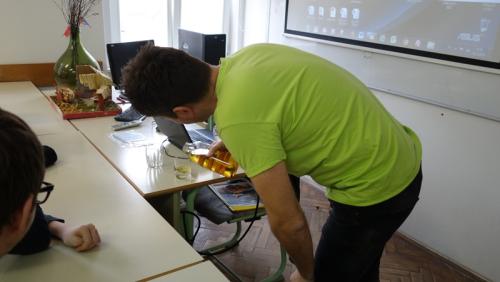
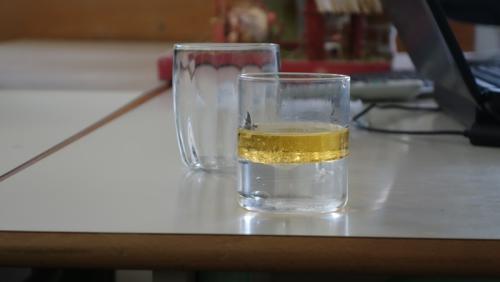
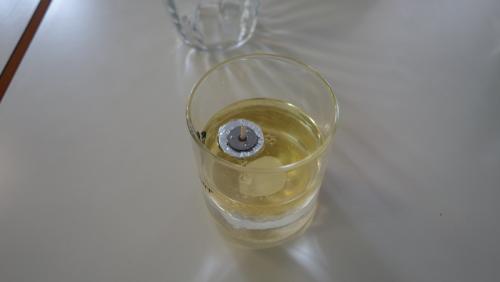
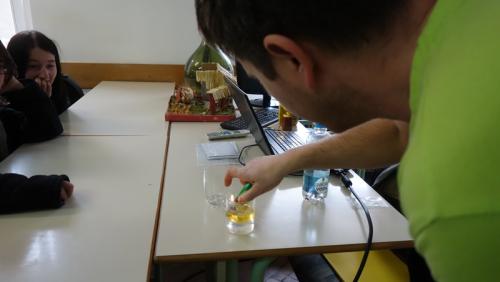
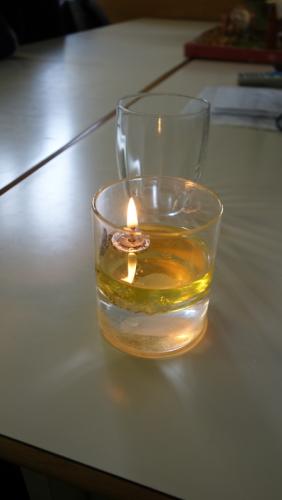
Because, we often do not know, where the oil remains after the preparation of lunch, the company decided that they could start producing candles from waste cooking oil. It is the only candle that is made from renewable sources, from waste material. The advantage of making such a candle is that we do not need dangerous chemicals for the manufacture, reduces the amount of discarded waste edible oil, allows the recycling of waste cooking oil at home, replaces an environmentally unfriendly paraffin candle and promotes the use of candles from a local source.
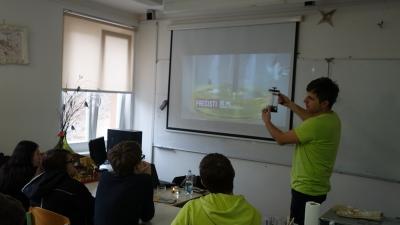
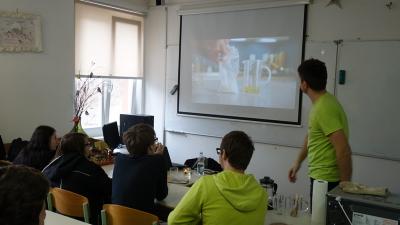
After the introductory part, the workshop was followed. The students were divided into three groups and each group could choose its smell and color of the candles. Thus, the smell of jasmine, mojito and roses spread throughout the candle making.
First, it was necessary to purify the waste edible oil,
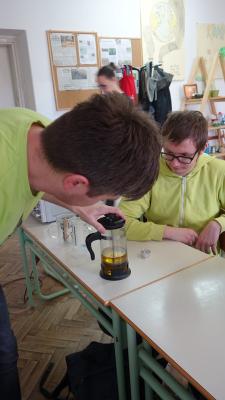
then the students accurately measured the amount of oil
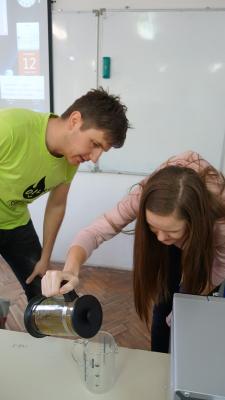
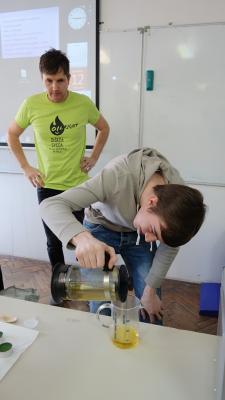
and mixed the powder made from vegetable substances into it.
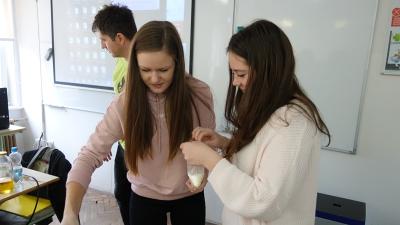
The mixture was placed in a microwave oven where it was heated.
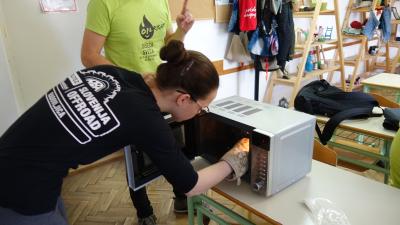
Finally, the powder was added to the desired fragrance and mixed. We quickly saw the changing of the color of the oil in green, blue and red.
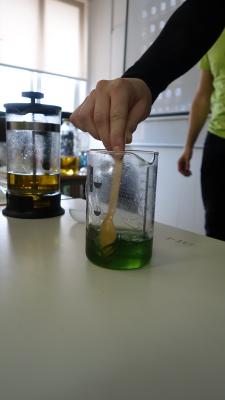
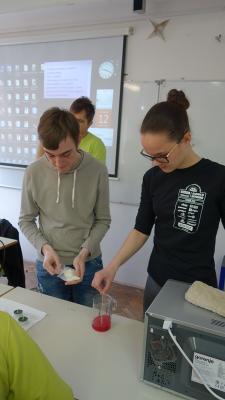
Meanwhile, the remaining members of the group prepared bins for candles and wickers. The colored mixture was finally poured into the bins
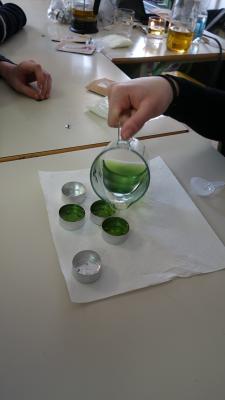
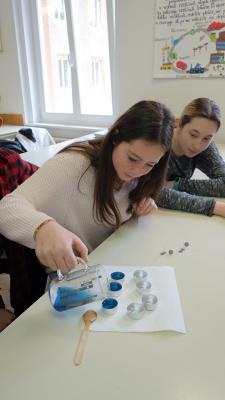
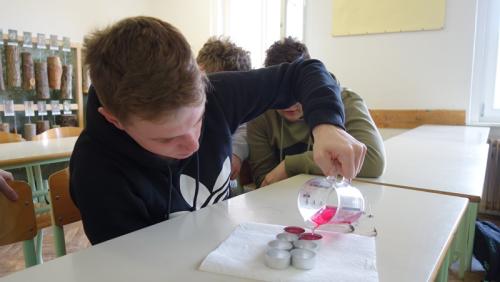
and allowed the candle to cool and solidify.
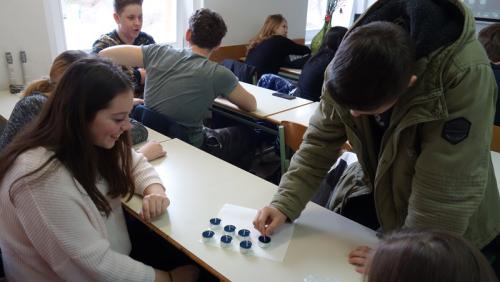
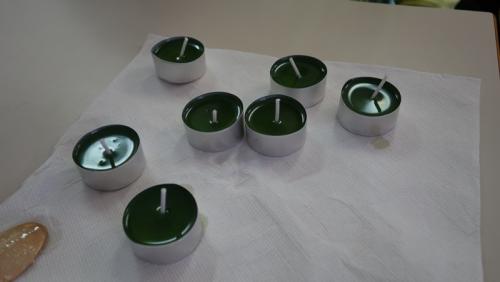
In a very simple and quick way, students came to their scented candles.
At the end of the workshop, everyone agreed that you did not even notice that waste edible oil was the basis for scented candles.
Well, a lot of fun at making these candles.
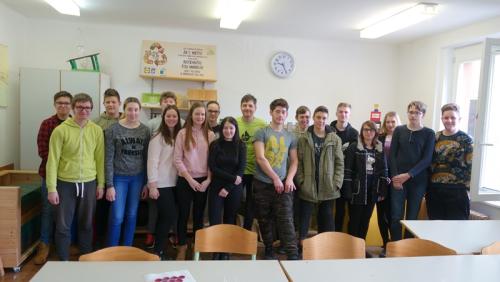
Mr. Bogdan has presented problems arising from the use of palm oil and paraffin wax candles. For the production of palm oil, huge tropical forests are cut out, and paraffin wax is made of oil. When burning paraffin candles, toxic toluene and benzene are generated. Therefore, use the paraffin candle as little as possible in enclosed spaces. We learned that wax candles are healthier for people, but they are more expensive.


Mr. Bogdan also showed us, how we can make a candle. For a simple candle, we need a glassware, water, waste cooking oil and wicks. So the candle is ready and just waiting to light it.





Because, we often do not know, where the oil remains after the preparation of lunch, the company decided that they could start producing candles from waste cooking oil. It is the only candle that is made from renewable sources, from waste material. The advantage of making such a candle is that we do not need dangerous chemicals for the manufacture, reduces the amount of discarded waste edible oil, allows the recycling of waste cooking oil at home, replaces an environmentally unfriendly paraffin candle and promotes the use of candles from a local source.


After the introductory part, the workshop was followed. The students were divided into three groups and each group could choose its smell and color of the candles. Thus, the smell of jasmine, mojito and roses spread throughout the candle making.
First, it was necessary to purify the waste edible oil,

then the students accurately measured the amount of oil


and mixed the powder made from vegetable substances into it.

The mixture was placed in a microwave oven where it was heated.

Finally, the powder was added to the desired fragrance and mixed. We quickly saw the changing of the color of the oil in green, blue and red.


Meanwhile, the remaining members of the group prepared bins for candles and wickers. The colored mixture was finally poured into the bins



and allowed the candle to cool and solidify.


In a very simple and quick way, students came to their scented candles.
At the end of the workshop, everyone agreed that you did not even notice that waste edible oil was the basis for scented candles.
Well, a lot of fun at making these candles.

... comment